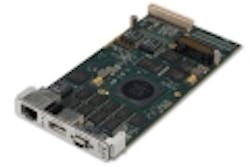Biological warfare defensive system that detects and identifies bio agents supplied by General Dynamics
CHARLOTTE, N.C., 14 Sept. 2010. U.S. Army officials needed capability to detect and identify biological warfare agents rapidly with man-portable, shelter-based, ship-based, and trailer-mounted instruments. They found their solution from General Dynamics Armament and Technical Products in Charlotte, N.C.
General Dynamics (NYSE: GD) won a $30 million six-year contract from the U.S. Army Research, Development and Engineering Command Acquisition Center at Aberdeen Proving Ground, Md., last month to build and support the Joint Biological Point Detection Systems (JBPDS) -- a self-contained test and measurement instrument suite that rapidly detects and identifies biological warfare agents.
Available in man-portable, shelter-based, ship-based and trailer-mounted variants, the JBPDS can be configured to Army and Navy requirements. Production of the JBPDS units will begin in April 2011. This contract has a potential value of up to $300 million if all options are exercised. General Dynamics Armament and Technical Products has supported the Army's JBPDS program since 2001, delivering over 700 units to date.
For more information contact General Dynamics Armament and Technical Products online at www.gdatp.com.
